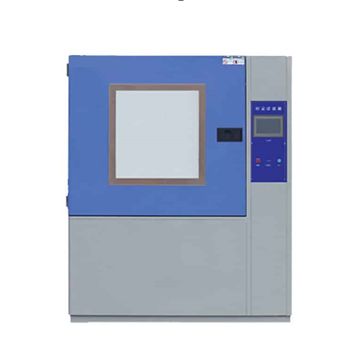Importance of Sand and Dust Testing in Product Reliability


In today’s rapidly evolving technological landscape, ensuring the reliability and durability of products has become paramount. Sand and dust testing plays a crucial role in evaluating product performance under harsh environmental conditions. By subjecting products to controlled sand and dust exposure, manufacturers can identify potential weaknesses, design flaws, and improve product reliability. This article highlights the importance of sand and dust testing in ensuring product reliability and discusses its significance across various industries.
Assessing Protection Against Ingress:
The presence of sand and dust can significantly impact the performance of products, particularly those used in rugged environments. Dust particles can infiltrate enclosures, corrode internal components, hinder moving parts, and impair functionality. Sand and dust testing simulates real-world conditions, allowing manufacturers to assess the effectiveness of protective measures against ingress. By subjecting products to controlled sand and dust exposure, manufacturers can identify potential areas of vulnerability and make necessary design improvements.
Evaluating Mechanical Performance:
Sand and dust testing also helps evaluate the mechanical performance of products. Fine particles can interfere with moving parts, leading to increased friction, wear and tear, and potential failure. Test chambers allow manufacturers to simulate abrasive conditions and assess the durability of materials, mechanisms, and bearings. By subjecting products to controlled sand and dust exposure, manufacturers can evaluate their resistance to mechanical stresses, ensuring reliability in challenging environments.
Validating Sealing and Gasketing Systems:
Effective sealing and gasketing systems are essential for protecting products from sand and dust ingress. Sand and dust testing enables manufacturers to validate the efficiency of these systems under realistic conditions. Test chambers simulate the presence of fine particles, allowing manufacturers to examine the performance of seals and gaskets. This ensures that products maintain their integrity, keeping damaging particles at bay and preserving functionality and reliability.
Enhancing Electrical Component Reliability:
Electrical components are particularly sensitive to sand and dust particles. The presence of conductive particles can cause short circuits, leading to malfunctions and potential damage. Sand and dust testing helps manufacturers evaluate the reliability of electrical components by subjecting them to controlled exposure. This process enables them to identify potential vulnerabilities and optimize designs to safeguard against environmental contaminants. By conducting thorough sand and dust testing, manufacturers can enhance the durability and lifespan of electrical components.
Compliance with Industry Standards:
Many industries, including automotive, electronics, and aerospace, have established standards and regulations related to sand and dust testing. Compliance with these standards is essential to meet industry requirements and ensure customer satisfaction. By subjecting products to sand and dust testing, manufacturers can demonstrate adherence to applicable standards and regulations. This validation provides assurance to customers that products have undergone rigorous testing to ensure reliability and performance under challenging environmental conditions.
Improving Product Design and Development:
Sand and dust testing has a significant impact on product design and development. By identifying weaknesses and potential failures during testing, manufacturers can refine designs, select appropriate materials, and incorporate necessary protective measures. Early-stage sand and dust testing can help address potential issues before they arise in real-world settings, saving both time and costs associated with redesigning and retesting products. This iterative process leads to the development of more robust and reliable products.
Conclusion:
Sand and dust testing plays a vital role in ensuring the reliability and durability of products across various industries. It enables manufacturers to assess protection against ingress, evaluate mechanical performance, validate sealing and gasketing systems, enhance electrical component reliability, and comply with industry standards. By subjecting products to controlled sand and dust exposure, manufacturers can identify weaknesses, improve designs, and enhance product reliability. Ultimately, sand and dust testing contributes to creating products that can withstand harsh environmental conditions, providing customers with reliable and durable solutions.


